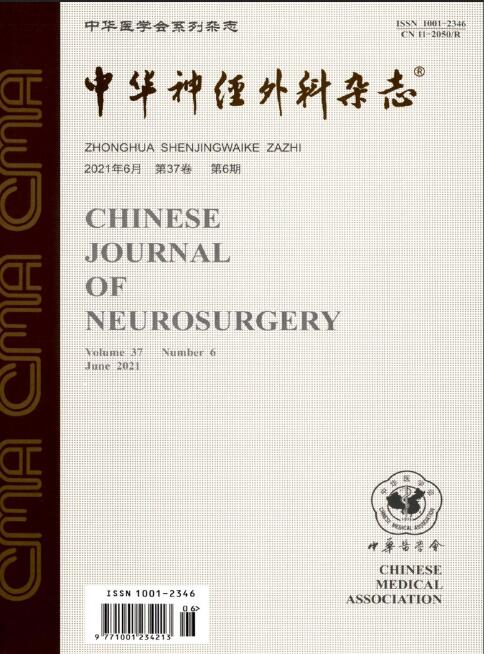智能人机协同机器人辅助开颅系统疗效的实验研究
Q4 Medicine
引用次数: 0
摘要
目的探讨机器人辅助开颅系统Cranibot的准确性、有效性和安全性。方法由中国人民解放军总医院第一医学中心神经外科和北京理工大学智能机器人研究所开发的Cranibot机器人系统,5具尸体猪头和5头巴马小型活体猪。每个受试者对称选择左右两侧进行开颅手术,每侧钻4个孔形成方形骨瓣。一侧颅骨的一部分被随机分为实验组,由机器人系统进行开颅手术,另一侧颅骨的对称部分则属于对照组,由同一神经外科医生团队进行开颅手术。我们观察并测量了两组患者的钻孔位置误差、开颅手术时间和组织损伤发生率。结果在颅骨模型实验中,“机器人”组开颅术的平均位置误差和时间分别为1.87±0.66mm和6.64±1.15min,“外科医生”组开颅手术的平均位置偏差和时间分别是3.14±0.73mm和8.06±1.10min。结论Cranibot机器人辅助开颅手术系统可以提高开颅手术的准确性和效率,其安全性有待于大样本量的进一步研究。关键词:机器人;神经外科手术;人机系统;模型,动物本文章由计算机程序翻译,如有差异,请以英文原文为准。
Experimental research on efficacy of intelligent human-machine collaborative robot-assisted cranio-tomy system
Objective
To explore the accuracy, efficiency and safety of robot-assisted craniotomy system named Cranibot.
Methods
The robot system called Cranibot was developed by Department of Neurosurgery, The First Medical Center of Chinese PLA General Hospital and Institute of Intelligent Robotics, Beijing Institute of Technology and then employed to carry out randomized controlled experiments on 3 kinds of subjects including 8 3D-printing PVC (polyvinyl chloride) skull models, 5 cadaveric pig heads and 5 living Bama miniature pigs. Both left and right sides were symmetrically selected in each subject to perform craniotomy, and on each side 4 holes were drilled to form a square bone flap. One part of the skull on one side was randomly categorized into the experimental group in which craniotomy was performed by robot system, and its symmetrical part of skull on the other side belonged to the control group in which craniotomy was performed by the same neurosurgeon team. We observed and measured the drilling position error, time spent on craniotomy and incidence of tissue injury in the two groups.
Results
In skull model experiments, the average position error and time spent on craniotomy of "robot" group were 1.87±0.66 mm and 6.64±1.15 min, and those of "surgeon" group were 3.14±0.73 mm and 8.06±1.10 min respectively. The differences were statistically significant (both P 0.05).
Conclusion
The robot-assisted craniotomy system named Cranibot could improve the accuracy and efficiency of craniotomy, while its safety requires further research with large sample size.
Key words:
Robotics; Neurosurgical procedures; Man-machine systems; Models, animal
求助全文
通过发布文献求助,成功后即可免费获取论文全文。
去求助
来源期刊

中华神经外科杂志
Medicine-Surgery
CiteScore
0.10
自引率
0.00%
发文量
10706
期刊介绍:
Chinese Journal of Neurosurgery is one of the series of journals organized by the Chinese Medical Association under the supervision of the China Association for Science and Technology. The journal is aimed at neurosurgeons and related researchers, and reports on the leading scientific research results and clinical experience in the field of neurosurgery, as well as the basic theoretical research closely related to neurosurgery.Chinese Journal of Neurosurgery has been included in many famous domestic search organizations, such as China Knowledge Resources Database, China Biomedical Journal Citation Database, Chinese Biomedical Journal Literature Database, China Science Citation Database, China Biomedical Literature Database, China Science and Technology Paper Citation Statistical Analysis Database, and China Science and Technology Journal Full Text Database, Wanfang Data Database of Medical Journals, etc.
 求助内容:
求助内容: 应助结果提醒方式:
应助结果提醒方式:


